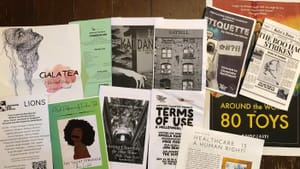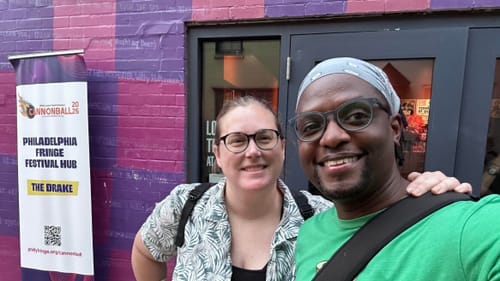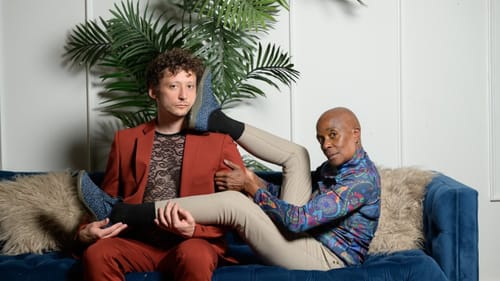Stay in the Loop
BSR publishes on a weekly schedule, with an email newsletter every Wednesday and Thursday morning. There’s no paywall, and subscribing is always free.
Theater attendance is on the rise. Here’s why it matters.
Four big takeaways from the 2025 Philadelphia Fringe Festival

This year’s Fringe confirmed some things I already knew. The best shows usually aren’t the buzziest or the most expensive. Magicians are not actors. I still don’t like improv shows (though I’m glad they exist). But there were also some surprises, and some hopeful themes. Now that this year’s fest has closed, I’ll share four takeaways.
This year, I saw more than two dozen Fringe shows at 16 different venues, from Cedar Park to East Passyunk to Fishtown—a fraction of the hundreds of shows on offer this year, but a decent tally for one editor. (And I appreciated every artist’s invitation! I dearly wish BSR could cover it all.) I also want to shout out our podcaster Darnelle Radford, who produced eight BSR Podcast episodes featuring 2025 Fringe artists.

Since the beginning of September, I’ve overseen almost 50 reviews by 21 different writers. All of this takes months of deep coordination with PR and ticketing staff, artists, writers, and the BSR team. I’m tired. I’m also really proud of our work and proud of Philly’s artists, which brings me to my first takeaway.
1) The Cannonball Festival has successfully leveled up.
The Cannonball Festival is the “first and largest hub of the Philly Fringe.” A haven for unhinged solo clowns and other terminal envelope-pushers, Cannonball scaled up rapidly on the artistic side in recent years while sometimes failing to properly meet its audience.
This year, Cannonball producers, box office, and house staff kept things running smoothly, moving crowds in and out of theaters that had only a few minutes’ turnaround time between different shows. And while past Cannonball hubs have been hard to get into, this year’s ground-floor venues, including the Drake and Icebox Project Space, were much more accessible. Pay-what-you-can ticketing, with options from $5 to $50, is also a model for boosting access. (When some regional theaters are charging $70 or more per ticket, it’s no wonder attendance is down—more on that in a minute.) And many Cannonball performances required audiences to wear masks, making theater safer for everyone—a measure most producers have been ignoring for years now.

And the work was good. A high proportion of the shows on my must-see list were Cannonball presentations, including a mix of locals and touring artists making their Philly debut. The few shows that were underdeveloped showed promise and were worthy of being presented. Which brings me to my next point.
2) Philadelphia Fringe artists are doing great work.
When you walk into a Fringe show, you never know if you’re going to love it or give a silent prayer of thanks when it’s over. That’s the fun of it. But out of all the shows I saw, only a few of them need to go back to the drawing board. I reviewed four shows, and three of those were excellent (Baby Everything, Lions, and Pennsylvania Semiconscious Liberation Army). Other standouts reviewed by BSR writers included Helpful Hints, The Presented, and Etiquette. So don’t just take my word for it. Almost across the board, with a few quibbles, BSR writers were enthusiastic about the work they saw.

Thanks to the support of our readers, our writers are honest, committed, independent critics—something that’s increasingly hard to find in today’s media. They tell the truth about the work, and the verdict is in on this year’s fest: Philly should be proud of the artists who call our city home, and the artists we attract.
3) Philadelphians want to go to the theater.
Recent data from PA Humanities and the Greater Philadelphia Cultural Alliance show that while attendance at cultural institutions is trending upward from where it was at the beginning of the pandemic, about half of Pennsylvania cultural organizations surveyed have not seen their audiences return to pre-pandemic levels. While theaters still lag behind other cultural sites like museums in terms of attendance, theater attendance jumped by a relatively high percentage in 2023/2024, so there’s a trend of growth.

Sales for this year’s Fringe reflected that growth. At almost every show I attended, people were walking in to buy tickets. Most of the shows I saw were quite full, and several were sold out. And, to my observation, the audiences were much more diverse in age, race, and gender than a typical house at a Philly regional theater. The kind of economic and disability access Cannonball is now modeling should be an important part of theaters’ plans to keep increasing those attendance levels: cost, physical barriers, and the high Covid-19 risk from unmasked audiences may be keeping people away who would otherwise get tickets.
On Monday, FringeArts confirmed to me that it was a record year for Fringe ticket sales, with just over 33,000 tickets sold (up from 30,700 last year), and that’s not counting the pending tally of walk-up ticket buyers.
4) We're making real connections in a world hellbent on dividing us.
To me, when people get themselves to the theater, especially to unknown, independent, or developmental work, they are saying something very important: we need to put down our screens and witness each other in person. Yes, the Internet is a vital way to learn, connect, and organize, particularly for people excluded from many physical spaces. (BSR lives on the Internet!) But powerful things can happen when we make the effort to get into the room together.
Many of the shows I attended were highly participatory. In at least two of them, I accepted the performers’ prompt to speak up myself. I joined talkbacks and met new artists. There is no better antidote to political despair and feelings of powerlessness than to remember you are part of a real-world community that needs your support. Authoritarians are terrified of the way artists reject censorship, expand minds, and build empathy between strangers. Art is protest. Art is free speech. Art is how we create our own futures. Tens of thousands of Philadelphians who showed up for this year’s Fringe know that.
Sign up for our newsletter
All of the week's new articles, all in one place. Sign up for the free weekly BSR newsletters, and don't miss a conversation.

 Alaina Johns
Alaina Johns